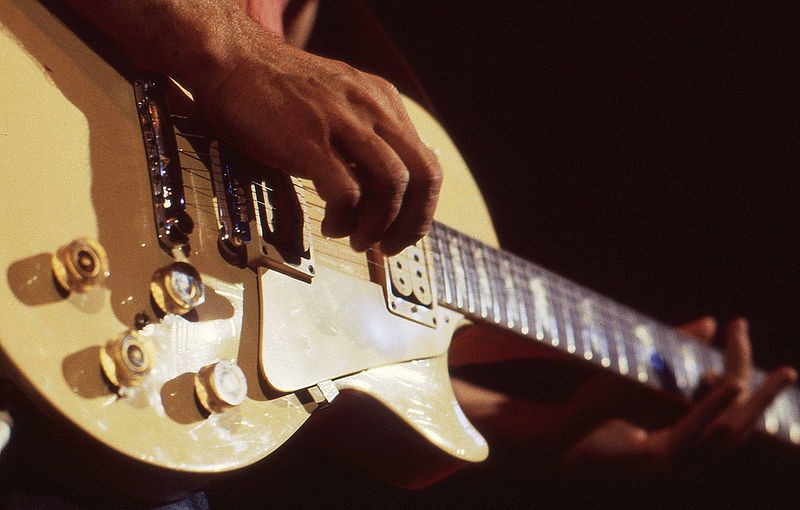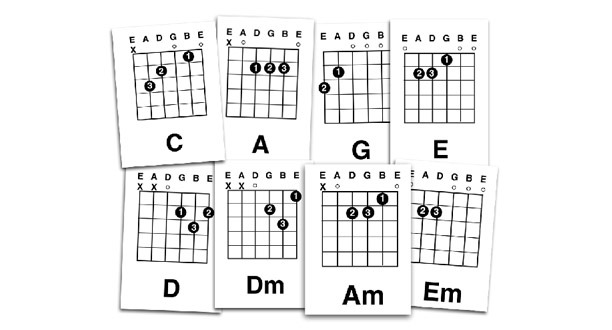You may find this baffling at first, but the skill of proper guitar tuning comes as equally important as the playing itself. The ability to distinct each guitar note by mere hearing is a must for every aspiring guitar hero and a critical obstacle you must cross on your way to becoming a versatile musician.
Tuning a guitar by hearing is the first step to fully understanding the ways of the axe. Although electronic tuner is definitely an item you should purchase for various reasons, learning to set the tones apart from each other is what initially allows you to express yourself through the instrument, rather than just jamming away the tabs you’ve learned by heart like a mindless drone. So to sum it all up, tuning the guitar by hearing gives you the skill to recognize how each tone, and essentially music, really works.
So now that we have the basics covered, let’s get down to some real business and learn how to tune a guitar. Of course, we will note from the beginning that it’s the standard EADGBE tuning we are dealing with, but same goes for numerous other similar tunings.
Tuning the low E string
The first step always includes tuning the thickest top string, or the low E string. If your guitar is completely out of tune, you will need another instrument or tool to help you adjust the tone by. You can either use a piano or go for the more of a modern approach and use some of the numerous tuning software tools with the ability to emulate various musical notes. Some of the electric tuners also have an option of producing flat tones, so you might as well use them, but not in the standard easy way.
So what you need to do is play the E note on your piano (the third white key on the left) or any other tool you might be using and adjust the tension of your strings by tightening or loosening the tuning heads at the top of the headstock part until the sounds are leveled. It might take a while to learn it, but it’s most definitely worth your while, as we discussed in the introduction paragraphs.
Tuning the A string
OK, now that we have the major issue of having the low E string properly tuned up out of the way, things become much easier and accessible. So the second trick you need to learn is how to tune a string if you already have the above string tuned up and ready to go. This is accomplished by playing the fifth fret on the above string and the open note of the string you are tuning. The goal is to level the two tones, as they represent the same note.
So in this specific case, you need to play the fifth fret on the low E string, or the A note, and then pick the open A string, once again producing the A note. You should then adjust the tension of the A string until the tones begin to match. Once they start sounding the same, the string is in tune and your goal is reached.
Tuning the D String
We’re moving on at the same pace and in the manner with the D string. Essentially, you need to implement the same tuning technique as the one you used with the A string. So play the fifth fret on the A string, or the D note, and then the open D string, once again the D note. Adjust the D string tension until the tones are leveled and you’re good to play.
Now that we already have a few strings tuned up, we can discuss another nifty trick you should know – you can also tune a certain string by leveling the tone according to the note produced by picking the seventh fret of the string below. So in this certain case, you can for example tune the A string by adjusting its open string tone to the note of the seventh fret of the D string, which is also an A note.
Tuning the G string
It’s the same old same old right about now. So in order to tune the G string, you need to play the fifth fret of the D string, producing the G tone, and then the open G string, once again the G note. Adjust the G string tension through the tuning head until both tones are leveled and you’ll have the string tuned up in no time.
As we’ve steadily reached the area of final two high strings, we need to note that the B string and the high E string break the pattern we’ve gotten used to so far. So both strings are half step lower that you might have expected. As you can see, the fifth fret on the G string is the C note, but the open string below produces the B tone, giving the whole pattern a bit of a twist.
Tuning the B string
So as we’ve already discussed, the highest two strings are somewhat of a zone of their own, making things work slightly different, especially when it comes to the B string. Now in order to tune it, you’ll simply need to level the open B string note to the fourth fret of the above G string, not fifth as we’ve got used to.
Tuning the high E string
Finally, it’s the high E string and once again the same pattern. Simply repeat the same action of picking the fifth fret of the B string and leveling it with the open high E string and you’re good to go.
A useful tip before we part ways – always tune the string by going below the tone you are trying to reach and then increasing the tension until the notes are leveled. This ensures a significantly smaller chance of strings getting out of tune, so never do it the other way around. Now you just need to be patient and diligent and the results will come along before you even know it. More importantly, your axe will be all tuned up and you’ll be able to enjoy a solid jam session, and nothing beats a solid jam, you can take our word for it.












Add comment